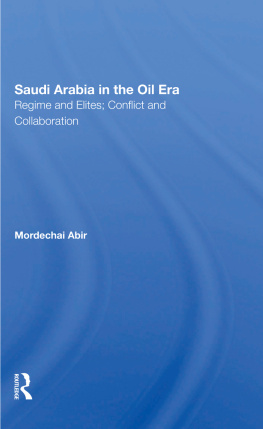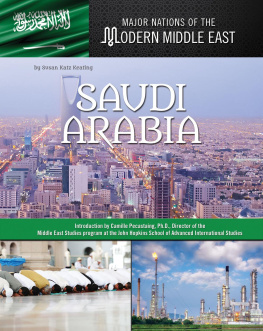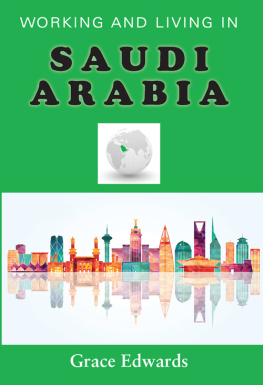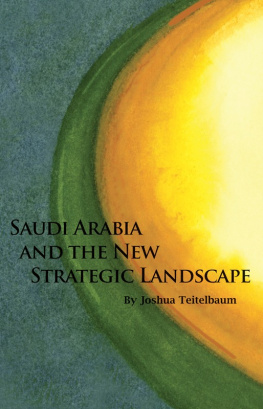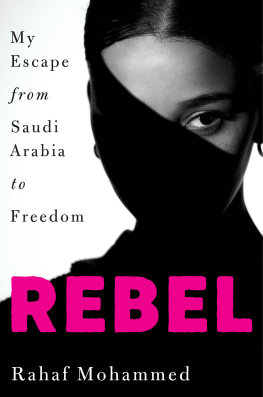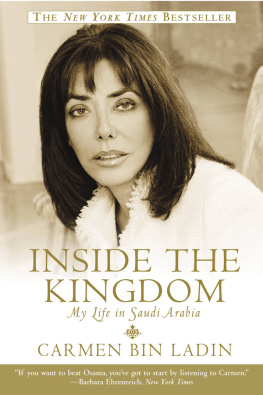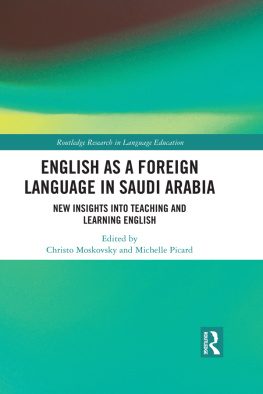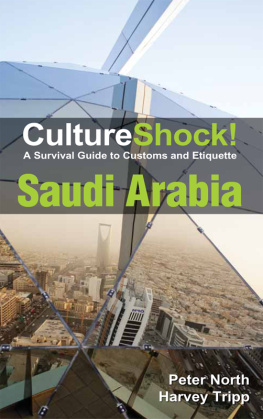ROUTLEDGE LIBRARY EDITIONS:
SAUDI ARABIA
Volume 5
SAUDI ARABIA IN THE OIL ERA
SAUDI ARABIA IN THE OIL ERA
Regime and Elites; Conflict and Collaboration
MORDECHAI ABIR
First published in 1988
This edition first published in 2015
by Routledge
2 Park Square, Milton Park, Abingdon, Oxon, OX14 4RN
and by Routledge
52 Vanderbilt Avenue, New York, NY 10017
Routledge is an imprint of the Taylor & Francis Group, an informa business
1988 Mordechai Abir
All rights reserved. No part of this book may be reprinted or reproduced or utilised in any form or by any electronic, mechanical, or other means, now known or hereafter invented, including photocopying and recording, or in any information storage or retrieval system, without permission in writing from the publishers.
Trademark notice: Product or corporate names may be trademarks or registered trademarks, and are used only for identification and explanation without intent to infringe.
British Library Cataloguing in Publication Data
A catalogue record for this book is available from the British Library
ISBN: 978-1-138-82515-4 (Set)
ISBN: 978-1-138-84633-3 (Volume 5)
Publishers Note
The publisher has gone to great lengths to ensure the quality of this reprint but points out that some imperfections in the original copies may be apparent.
Disclaimer
The publisher has made every effort to trace copyright holders and would welcome correspondence from those they have been unable to trace.
SAUDI ARABIA
IN THE OIL ERA
REGIME AND ELITES;
CONFLICT AND COLLABORATION
MORDECHAI ABIR
CROOM HELM
London and Sydney
1988 Mordechai Abir
Croom Helm Ltd, Provident House,
Burrell Row, Beckenham, Kent BR3 1AT
Croom Helm Australia, 44-50 Waterloo Road,
North Ryde, 2113, New South Wales
British Library Cataloguing in Publication Data
Abir, Mordechai
Saudi Arabia in the oil era: regime and
elites: conflict and collaboration.
1. Saudi Arabia Social conditions
I. Tide
953.805 HN663.A8
ISBN 0-7099-5129-9
Filmset by May hew Typesetting, Bristol, England
Printed and bound in Great Britain
by Billing & Sons Limited, Worcester.
Contents
ANLF | Arab National Liberation Front |
CGC | Council for Gulf Cooperation |
CSM | Christian Science Monitor |
EIU | Economic Intelligence Unit |
FBIS | Foreign Broadcasting Information Service |
FT | Financial Times |
IHT | International Herald Tribune |
IJMES | International Journal of Middle Eastern Studies |
IRO | Organisation of the Islamic Revolution for the Liberation of the Arabian Peninsula |
JP | Jerusalem Post |
JQ | Jerusalem Quarterly |
KFU | King Faysal University |
KSU | King Saud University |
MEED | Middle East Economic Digest |
MET | Middle East Journal |
MES | Middle Eastern Studies |
NLF | National Liberation Front |
NRF | National Reform Front |
NYT | New York Times |
OPEC | Organisation of Petroleum Exporting Countries |
PDF | Popular Democratic Front (Saudi) |
PDFF | Popular Democratic Front for the Liberation of Palestine |
PDP | Popular Democratic Party |
PDRY | Peoples Democratic Republic of Yemen |
PFLOAG | Popular Front for the Liberation of Oman and the Arabian Gulf |
PFLP | Popular Front for the Liberation of Palestine |
PLO | Palestine Liberation Organisation |
SABIC | Saudi Basic Industries Corporation |
SAMA | Saudi Arabian Monetary Agency |
SR | Saudi riyal |
UAE | United Arab Emirates |
UAR | United Arab Republic |
UK | United Kingdom |
UPAP | Union of the Peoples of the Arabian Peninsula |
UPM | University of Petroleum and Minerals |
US | United States |
USA | United States of America |
WP | Washington Post |
WSJ | Wall Street Journal |
In Memory of Anat,
the Victim of her Fathers Academic Career
When I began a survey of source material for this book in the early 1980s, I was somewhat surprised by the paucity of sources relating to socio-political dynamics in modern Saudi Arabia both in European languages and Arabic. Thus, William Rughs article Emergence of a New Middle Class in Saudi Arabia (1973), for instance, remains a classic to this day. In the field of social anthropology I found only a handful of serious studies of the Saudi population produced by western and Arab scholars (Katakura, Lancaster, Cole, Shamekh, and Hamzahs outdated work). Other sources in Arabic largely dealt with the kingdoms geography and tribal division, past history to the twentieth century, the reign of Abd al-Aziz ibn Saud, and the rise of the Wahhabi movement and its impact on the Arabian Peninsula. The contribution of Saudi scholars of good standing to the subject was minimal, as the Saudi modern elites were beginning to emerge in the middle of the century and only lately have they begun to publish worthwhile scholarly studies of their society and government studies inhibited, unfortunately, by the character of the regime and its strict censorship laws.
It was not only that Saudi Arabia was a sparsely populated desert periphery of the Arab world, but travelling in the kingdom until the 1960s or early 1970s was technically difficult and the authorities, as well as the xenophobic Wahhabi-Saudis, were suspicious of foreigners (Hijaz is the exception) travelling in their country or researching its population. Indeed, with very few exceptions, foreigners were not permitted to conduct fieldwork in the rural areas (Lancasters and Coles experience) and until the 1970s were not supposed even to travel in the kingdom other than between its main towns and in the Eastern Province, where Aramco began to operate on a large scale after World War II (and became a major source of information on Saudi Arabia as well as of oil). The provincial governors (amirs) are,


